Rescue and Relief Activities
The atomic bombing inflicted a crushing blow on Nagasaki's existing medical treatment system. The surviving doctors and nurses began relief activities, but the lack of equipment and supplies made it impossible to provide even first-aid. Relief trains meanwhile traveled into the still-burning neighborhoods near the hypocenter and carried victims to hospitals in nearby towns. A naval hospital relief team entered the city in the evening, and during the night rescue teams comprised mainly of volunteer guard and fire-fighting brigades from the neighboring towns arrived to assist the victims.
Makeshift hospital at Shinkozen Primary School
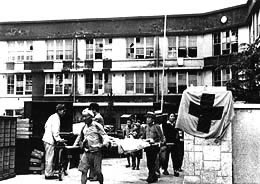
This school served as Nagasaki's leading relief station and provided shelter for a large number of people injured in the atomic bombing. The victims died one after another, suffering from the then unknown symptoms unique to atomic bomb disease.
( Photograph by Yasuo Tomishige )
A child cries while receiving treatment for burn
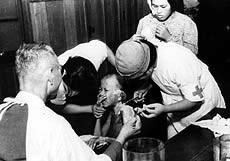
(makeshift hospital at Shinkozen Primary School)
( Photograph by Yasuo Tomishige )
Relief work at a makeshift hospital converted from an elementary school
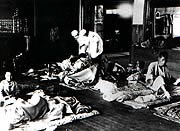
(makeshift hospital at Shinkozen Primary School)
Emergency relief station
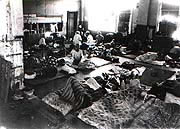
(makeshift hospital at Shinkozen Primary School)
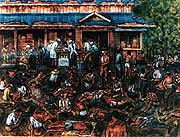
This scene depicts the memory of the situation at an emergency relief station at Nameshi, some 4 km from the hypocenter.